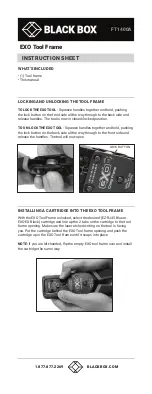
86
January 2004
Formatting Attributes
Several attributes are used to modify the value entered by the user. This is so that when the PARAMETER is
used in the GCODE section, it will appear correctly. The Format column in the following table shows what
would result from the G code template X#A, if the user enters 1 when asked for the value of parameter A. If
none of the formatting attributes are used, the resulting G code would be X1.
Attribute
Format
Description
(NO DECIMAL)
X1
The value will appear in the final G-code output without a
decimal point. Can be used for spindle speeds, tool numbers
and offsets.
(ONE PLACE)
X.1
Numbers entered without a decimal point are automatically
scaled to tenths.
(TWO PLACE)
X.01
Numbers entered without a decimal point are automatically
scaled to hundredths.
(THREE PLACE) X.001
Numbers entered without a decimal point are automatically
scaled to thousandths.
(FOUR PLACE)
X.0001
Numbers entered without a decimal point are automatically
scaled to ten-thousandths.
If more than one of these attributes are used with a single parameter, the results are not defined.
NOTE:
Do not use more than one formatting attribute for a single parameter.
G CODE Section
The GCODE section is responsible for producing the G code necessary to cut the specified part. Similar to the
previous sections of program O09997, the GCODE section consists only of comments. The comments contain
standard programming code, just as a user would type it into the editor, except that the end-of-block marker (;)
is not used within the comments. The other difference is an extension similar to macro variables: in place of a
numeric value, # followed by a letter may be entered. The letter represents the variable name of a parameter in
the PARAMETERS section.
For example, one of the lines might be:
(X#A)
Which means, "X followed by the number entered for parameter A." For example, if the user entered 3.5 for
parameter A, the resulting G-code would be
X3.5;
Remember, the #letter combination can be used anywhere a number would be used; this means in expres-
sions, as well as with simple codes. For example, (X [#A - #B]) is valid, as long as both A and B exist in the
PARAMETER section.
NOTE
:
Be sure to use the parameter formatting attributes to make sure the G-code that is produced is
valid. For example, T101.; is not a valid G-code, because of the decimal point. So if a line in the G-code
section reads (T#E), then parameter E must have the NO_DECIMAL attribute set.
Summary of Contents for VF Series
Page 1: ...January 2004...
Page 7: ...V I January 2004...
Page 125: ...118 January 2004...
Page 126: ......
















































